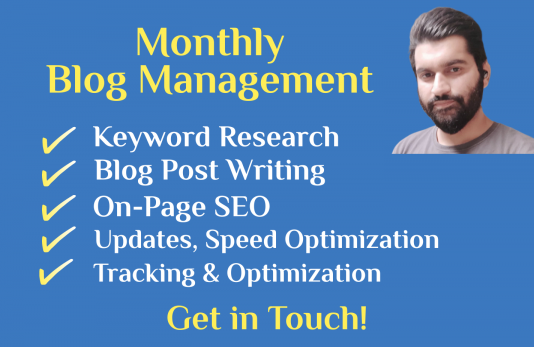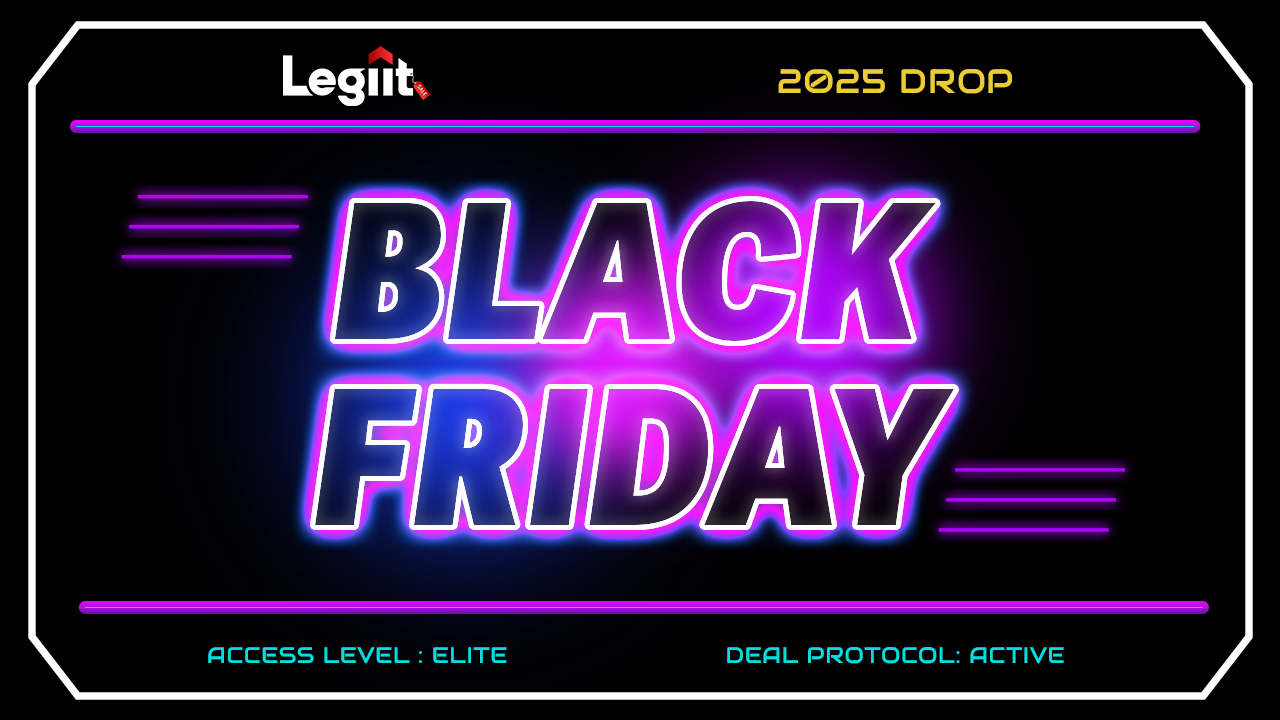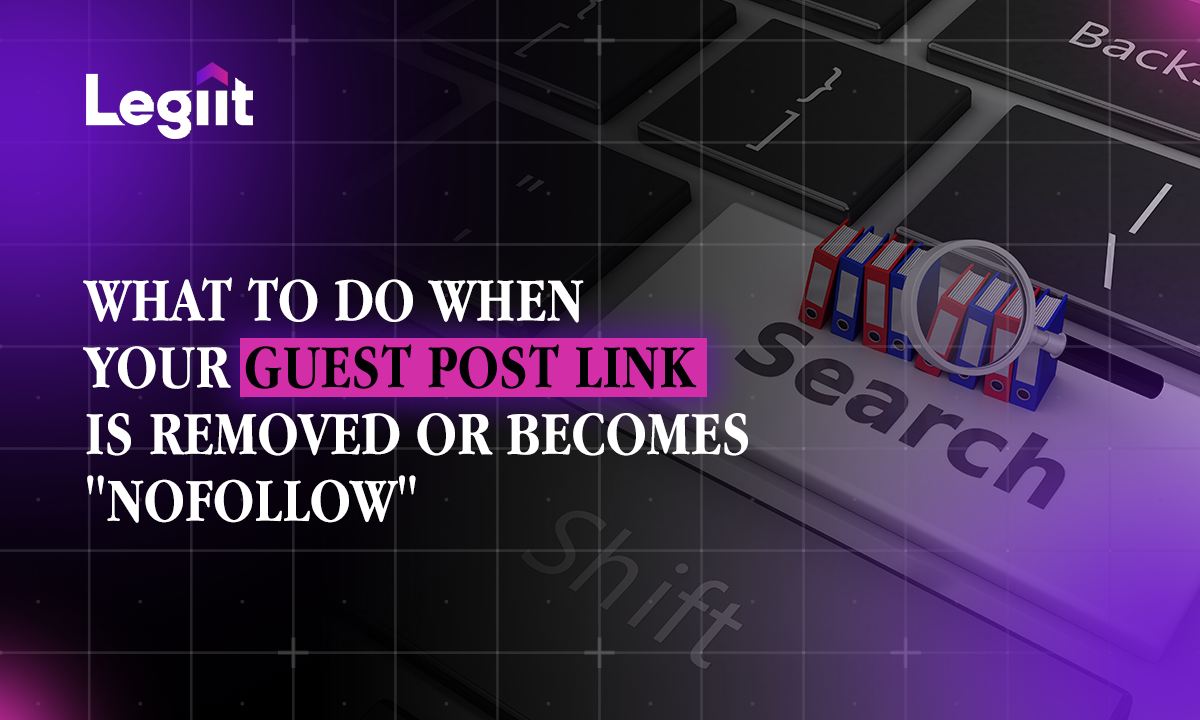Generating high-quality leads consistently is one of the most important aspects of a successful affiliate business.
Without an effective lead-generation system, it’s not possible to achieve sustainable growth.
In this ultimate guide on affiliate marketing lead generation, we’ll tell you:
- What are leads in affiliate marketing
- How to create a converting landing page for affiliate marketing
- How to generate leads for affiliate marketing
- And more
Let’s talk.
Understanding Lead Generation
Understanding lead generation is a crucial and often neglected first step in building an affiliate marketing business.
So, before we delve into anything else, let’s see what lead generation is.
Defining Lead Generation
Lead generation is a process of identifying and attracting potential customers to your business.
The way you convert a prospect into a lead is by getting their contact information.
Because a lead expresses interest in your affiliate product or service, making them a paying customer is easy.
Different Types of Leads
Marketing leads can generally be classified into three types: Cold, warm, and hot.
Cold leads are leads that haven’t yet shown interest in your service or product but fit your target audience’s profile.
This type is typically the hardest to convert. But, since they also tend to be large in number, you need to develop a strategy to effectively move them down the sales funnel.
Warm leads are leads that either know about your business or have interacted with it in some way.
They’re typically easier to do business with than cold leads.
Examples of warm leads would be your email list and social media followers.
Hot leads are leads that every business wants. These are people that are almost ready to trust your product and make the decision.
Needless to say, hot leads are the easiest to convert into paying customers.
This is why these leads tend to be costly as well.
An example of a hot lead would be someone who’s just booked a consultation call or added a product to their shopping cart.
Importance of Targeting the Right Audience
Understanding where your leads are in the buying cycle helps you generate better results with your marketing efforts.
Cold leads require more nurturing and engagement. Converting warm leads to hot leads requires personalized messages and offers.
Whereas hot leads don’t require a lot of effort for conversion.
Choosing the Right Affiliate Program
Why Is It Important?
Choosing the right affiliate program is more important than you may think.
It dictates your ability to build high-quality leads and move them down the sales funnel.
Working with affiliate programs or networks that align with your audience is crucial. But, there are other factors to look at.
Criteria for Selecting an Affiliate Program
Look for affiliate programs that offer generous affiliate commissions. Consider working with software companies that pay recurring commissions.
A good affiliate network also offers marketing assets or material and helpful support.
Also, don’t forget to look at their online reviews.
And of course, the product you’re going to promote to your audience should be high-quality.
Importantly, it should offer everything that’s promised by the seller.
By selecting the right affiliate company, you can significantly improve your chances of generating quality leads.
With that out of the way, let’s now talk about lead generation through a landing page.
Creating a High-Converting Landing Page
Defining a Landing Page
A landing page is simply a web page that’s specifically designed to convert visitors into leads.
Every part of a landing page is optimized for a single action.
In affiliate marketing lead generation, this means getting the visitor to provide their email address.
A lead generation landing page is designed and written to grab visitors’ email addresses.
In this guide, we’re only concerned with this type of landing page.
Importance of a High-Converting Landing Page
Having a high-converting landing page is crucial to the success of any affiliate marketing sales funnel.
Because if your landing page isn’t converting enough, you’ll lose a lot of leads and potential sales.
No matter the source and quality of your traffic.
Components of a Landing Page
Here’s a list of all landing page components you should optimize for conversion:
- Headline
- Copy
- Images
- Social proof
- Call-to-action
Importantly, every part of your landing page should have one clear motive: Get the visitor to give out their email address!
Let’s now talk about how you can go about optimizing your affiliate landing page for maximum conversions:
How to Create a Converting Lead Generation Landing Page

Understand Your Audience: One of the first steps in creating a converting landing page is to know your audience: Their pain points, desires, or whatever they want.
Write an Effective Headline: The headline is the first thing someone sees on your landing page after visiting it.
So, creating an attention-grabbing headline that gets visitors to read the rest of your content is essential.
To accomplish that, add a benefit or a solution to the problem your target audience cares about.
Some other headline best practices include:
Using numbers and statistics to make it more specific
Creating a sense of urgency with phrases like “Limited time offer”
Asking a question
Using strong, emotional language
Plus, keep the headline short, concise, clear, and relevant to the audience.
Write Compelling Copy: This is where all the conversion happens. When your copy isn’t good enough, it keeps your landing page from generating any leads.
Here are a few tips.
Highlight the benefits of your offer! If you’re asking for their email address, tell them what they’ll get in return.
For instance, a lead magnet in the form of a helpful PDF file can work great.
Or, you can just list the benefits of joining your newsletter.
Another thing to keep in mind while writing landing page copy is conciseness. You don’t want to beat around the bush; get to the point as quickly as possible.
Plus, be crystal clear about what you want the visitor to do. This means optimizing each section for a single action.
In addition, use short and scannable paragraphs. And, an average reader should be able to understand every word on your landing page.
A small but crucial part of your landing page is its CTA.
The call to action should be clear, concise, and actionable, for instance, “Sign up now”, and “Get your free trial”.
Optimize for Mobile: As an affiliate marketer, you can’t ignore the fact that more and more mobile phones are being used to access web pages.
This means that even if your landing page is optimized for conversions if it’s not mobile-friendly, you could end up losing a lot of leads.
Thankfully, keeping a web page mobile-friendly isn’t rocket science; just make sure you’re using a responsive theme and you’ll be good to go.
Optimize for Speed: A visitor should be able to interact with your landing page within the first few seconds of landing on it.
Otherwise, get ready to lose a good chunk of affiliate leads.
That’s because people tend to prefer getting quick answers and don’t like to wait.
Plus, Google prefers fast web pages over slow ones.
Test and Optimize: Lastly, continuously test your landing page copy and see if there’s anything you should be optimizing.
Tools like Microsoft Clarity tell you a lot about how your visitors interact with your web pages.

You can use analytics tools like Google Analytics and make data-driven decisions.
Now, landing pages can help you convert visitors into leads, no matter where these visitors come from.
But, a blog can single-handedly attract, build, and retain a list of leads that you can convert later.
So, if you don’t have a blog section on your website, create one.
Use Blogging for Lead Generation
Blogging is arguably the most powerful way to generate leads for an affiliate business.
Done right, it can help you generate high-quality leads consistently, on autopilot.
But of course, you need to work on the right topics and create super-helpful content first.
Here’s how you do that.
Find Low-Hanging Keywords
The first important step is to find some relevant topics that people are searching for on Google.
Preferably, use a free tool like Google Keyword Planner to find these keywords.
It’ll spit out a list of related searches when you search a seed keyword.

You won’t see the exact monthly search volume of these keywords unless you’re running a Google ad campaign.
Write Helpful, Engaging Content
Once you’ve identified the blog post topics that resonate with your target audience, it’s time to produce content around them.
Start by writing an attention-grabbing introduction that also persuades the reader to read the rest of the post.
Use a conversational tone and simple language that appeals to a wide range of audience.
Consider adding relevant images to make your posts easily digestible.
Most of all, avoid getting too salesy and be genuinely helpful.
Recommended Blog Post Writing Service: Premium Blog Content That Ranks

Optimizing for SEO
SEO isn’t an important factor when you aren’t attracting traffic from search engines.
But, a blog lives and thrives on organic search engine traffic.
So, you need to make sure your content follows all the on-page SEO best practices.
This involves sprinkling your main keyword/s throughout the blog post naturally.
Other on-page SEO factors include:
- Title, meta description, and headings
- Internal and outbound linking
- Images with alt tags
- Time on site (To improve dwell time, which improves SEO)
Related: How to Get Traffic to Your Website
Promoting Your Blog Posts
Creating a high-value, SEO-friendly blog post is an important part of the lead generation process.
But, you don’t want to solely rely on organic traffic, especially because it can be unreliable.
So, what you want to do is promote every piece of content on relevant online platforms like:
- Facebook
- Twitter
- LinkedIn
The more eyeballs you get on your posts, the more leads you can generate with your content.
Building an Email List with Blogging
Now that you know how to create and promote blog posts for lead generation, it’s time to build your email list.
Offer a Lead Magnet
Our personal email addresses are generally too valuable to give out for free.
People hesitate when someone asks for their email address.
You need to ask yourself, why should your target audience give their email addresses?
A valuable lead magnet might be the best answer/solution.
Lead magnets are any digital assets or files that can be exchanged for email addresses.
Here’s how you build your affiliate email list:
- Create a lead magnet that’s too good to reject
- Then, sign up for an email marketing service like MailChimp
- Use the free version of the software to create a landing page or a form for your lead magnet
Here’s an Affordable Lead Magnet Service on Legiit: Create Professional Lead Magnets, PDFs, Ebooks, Workbooks

Use a Popup Form
Exit-intent popups are a powerful way to get the right people on your email list.
These popups appear right when a visitor is about to leave your page.
This makes signing up for your newsletter or grabbing that lead magnet reasonable and more convenient.
However, keep in mind that popup forms can be annoying if you don’t use them the right way.
Make sure your form isn’t making content on the web page any less accessible by using an exit-intent popup.
Use Inline Forms
You can add your email signup form anywhere you want on your blog posts.
For instance, the top-right spot of your blog is a place that catches the attention of a typical visitor.
You can also add an inline form within or at the end of every blog post.
Remember that if your content is valuable, readers would want to join your newsletter.
Plus, your sign-up form doesn’t have to be long. It shouldn’t be complicated either.
A simple form with first name and email address fields can do the trick.
Just make sure to use an actionable call to action to get people to sign up.
Let’s now talk about how to use social media traffic to generate leads for affiliate marketing.
Utilizing Social Media
Social media has become an important part of everyday life for most people.
Smart businesses utilize that fact by getting in front of this casual audience.
Different social media platforms offer different marketing and advertising tools.
It’s up to you to identify the right ones and create an effective strategy.
Facebook can be the number one source of affiliate leads for you, if you know how to leverage it.
Start by creating a page and posting regular updates whether it be new blog posts or affiliate offers.
Next, start following relevant groups and pages and join in the conversations.
Every Facebook group is a community you want to get into first.
You want to be at least 80% helpful and 20% promotional with your content/engagement strategy.
Facebook ads can also be a great source of high-quality affiliate traffic for your landing pages/blog posts.
Twitter can be another powerful source of affiliate leads.
Start by creating relevant, high-quality content in your affiliate niche.
Only follow relevant people and share/retweet their best content with your audience.
Get into conversations with their audience and try to establish yourself as an authority in the industry.
Tweets can be too small sometimes.
Twitter Threads is a great way to engage readers for a longer time and redirect them to your offers/landing pages.
Like Facebook ads, you can also use Twitter ads to drive social media traffic to your landing pages.
LinkedIn is another great place to build your authority with content marketing and attract affiliate leads.
LinkedIn posts and articles are two powerful ways to attract readership and engage the right people.
Don’t forget to use hashtags; they can push your posts to specific audiences on the platform.
In addition to using your personal account, you may want to create a company page as well.
Take part in group discussions and build relevant connections.
Dropping an introductory message in someone’s inbox is also a good way to build meaningful connections.
Whatever social platform you choose for affiliate lead generation, be sure to get the word out about your blog and email list.
Using Paid Advertising
If you’re new to lead generation for affiliate marketing, using paid ads might not be your best option.
The best way is to create some organic content and then shift to paid marketing.
But eventually, if you want to diversify your lead generation traffic sources, paid ads can be a great option.
Here are the main advantages and disadvantages of paid ads to consider.
Advantages
Targeted Audience: Paid ad platforms like Facebook ads and Google ads let you hyper-focus on a group of similar people.
You get to target them on the basis of geography, sex, interests, online behavior, and a few more factors.
Immediate Results: The best thing about paid ads is that they generate immediate results. So, you can generate more leads for affiliate marketing in less time with ads.
Measurable Metrics: Ad platforms give advertisers actionable metrics to help them analyze their strategies.
This lets you pivot your ad campaigns in the right direction and make them more cost-effective.
Disadvantages
Upfront Investment: The thing that keeps people away from advertising is the investment it requires upfront.
The problem is that even after investing a decent amount, you can never be sure about an ad’s success.
Competition: Because ads generate immediate results, advertisers compete with each other for top spots on the internet.
This means your affiliate ad can easily get expensive as the competition rises.
How to Create a Lead Generation Ad for Affiliate Marketing
Know Your Audience: The most important thing to consider when creating an ad is your audience. Who are they and what they want are the two questions you must have the answers to.
Grab Their Attention: Your ad’s headline should grab people’s attention and make them read the rest of the ad. It should be clear and set the tone of the ad.
Use Engaging Visuals: The visuals can keep the prospect from scrolling down your ad. Add relevant overlay text to describe your offer.
Write Actionable CTA: As for the CTA, it should be simple, short, and clear.
Use a Short Form: Ask only for the most important information from the prospects. No one likes to fill out long, tedious forms.
Test Your Ads: Always take help from campaign data to make informed advertising decisions and optimize your ad spend.
Eventually, every best practice helps you build better-quality leads for your affiliate marketing business.
You May Also Like: Outsourcing Advertising (The Ultimate Guide)
Utilizing Influencer Marketing
Influencer marketing involves working with someone with a considerably large online following in your industry or niche.
In recent years, influencer marketing has become one of the go-to strategies for lead generation.
Before reaching out to an influencer, it’s important to ensure they’re the right fit for the partnership.
Factors like their follower count, niche, posts’ engagement, and past experience with other brands are important.
Next, find a few most relevant social media personalities in your niche. Do some research on them, interact with their posts, and reach out with a direct message.
Make sure to offer something first before asking them to promote your affiliate landing page.
Recommended Influencer Marketing Expert: Influencer Marketing Researcher

Outsource Your Lead Generation
Lead generation for affiliate marketing is an ongoing process.
Plus, from blog post creation to analyzing and optimizing your landing pages, it has so many moving parts.
If you’re an affiliate marketer but don’t have the time or skill to do the labor yourself, consider hiring freelancers.
Legiit has everything you’d need to run a successful affiliate marketing business. Hire the best, most cost-effective freelance services out there.













 Download
Download